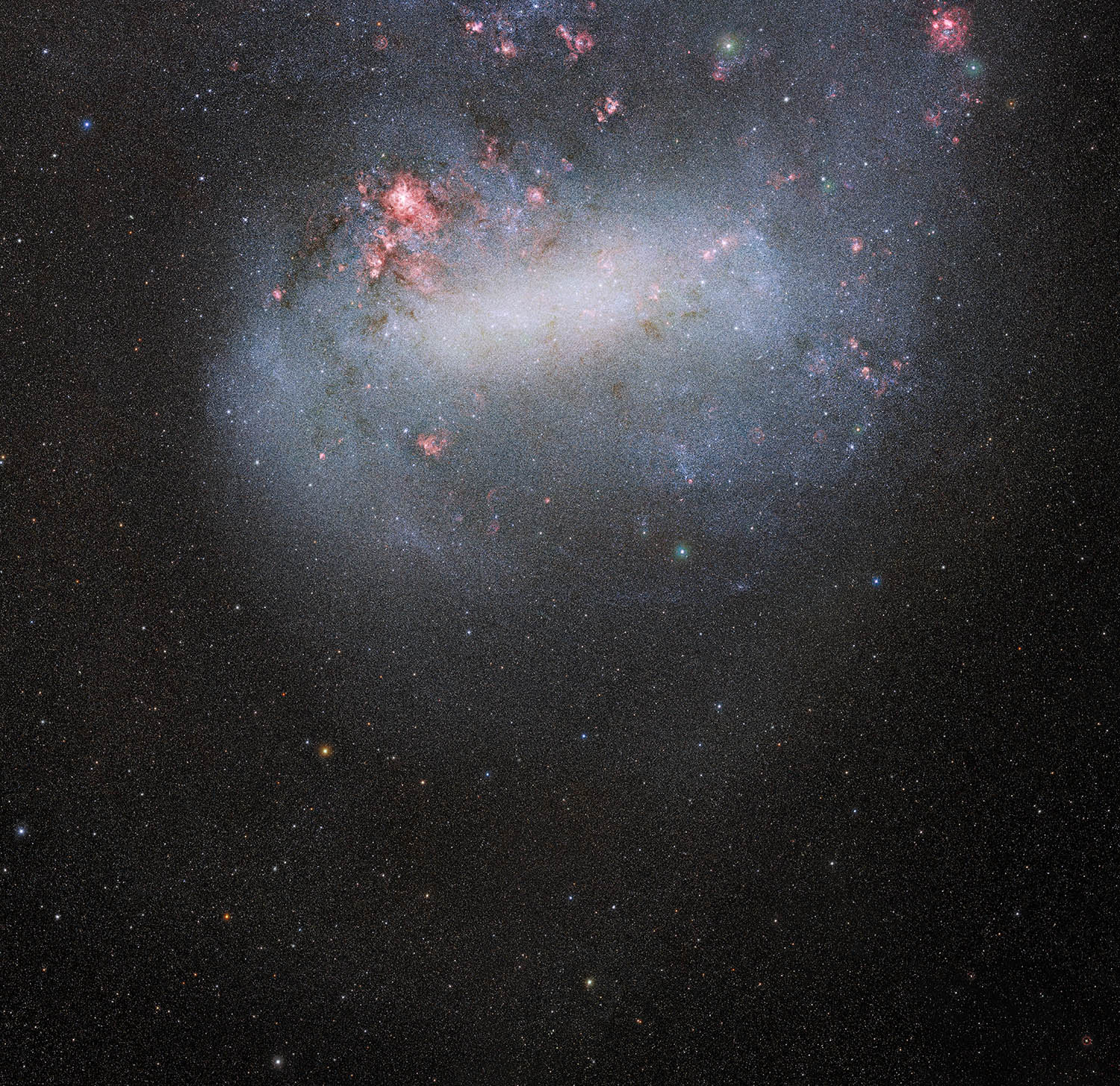NOIRLab: Dark Energy Camera Snaps Deepest Photo yet of Galactic Siblings

Part of the SMASH dataset showing an unprecedented wide-angle view of the Large Magellanic Cloud. The Large and Small Magellanic Clouds are the largest satellite galaxies of the Milky Way and, unlike the rest of the satellite galaxies, are still actively forming stars — and at a rapid pace. The depth of these survey data can be appreciated by the number of stars visible in the outer regions of the galaxy, as seen in the lower part of the image.
Credit: CTIO/NOIRLab/NSF/AURA/SMASH/D. Nidever (Montana State University) Acknowledgment: Image processing: Travis Rector (University of Alaska Anchorage), Mahdi Zamani & Davide de Martin
A treasure trove of data from the SMASH survey unveils the Magellanic Clouds in exquisite detail
Images from the Survey of the MAgellanic Stellar History (SMASH) reveal a striking family portrait of our galactic neighbors — the Large and Small Magellanic Clouds. The images represent a portion of the second data release from the deepest, most extensive survey of the Magellanic Clouds. The observations consist of roughly 4 billion measurements of 360 million objects.
A sprawling portrait of two astronomical galactic neighbors presents a new perspective on the swirls of stars, gas, and dust making up the nearby dwarf galaxies known as the Large and Small Magellanic Clouds — a pair of dwarf satellite galaxies to our Milky Way [1]. While this isn’t the first survey to map these nearby cosmic siblings — the Survey of the Magellanic Stellar History (SMASH) is the most extensive survey yet.
The international team of astronomers responsible for the observations used the 520-megapixel high-performance Dark Energy Camera (DECam) on the Víctor M. Blanco 4-meter Telescope at the Cerro Tololo Inter-American Observatory (CTIO) in Chile. These data are now available to astronomers worldwide through Astro Data Lab at NOIRLab’s Community Science and Data Center (CSDC). CTIO and CSDC are both Programs of NSF’s NOIRLab.
“To date, this is the deepest and most extensive astronomical dataset of the Magellanic Clouds, which are the closest large galaxies to us,” explains David Nidever, Assistant Professor in the Physics Department at Montana State University and Principal Investigator of the SMASH survey. “These satellite galaxies have been studied for decades, but SMASH is being used to map out their structure over their full, enormous extent and help solve the mystery of their formation.”
The complete SMASH survey, which includes the view shown in these images, covers an area 2,400 times greater than the full Moon, and required about 50 nights of specialized observations. This second data release contains new data from DOE-built DECam on the central and most complex regions of the Magellanic Clouds. The Large and Small Magellanic Clouds are the largest satellite galaxies of the Milky Way and, unlike the rest of the satellite galaxies, are still actively forming stars — and at a rapid pace.
